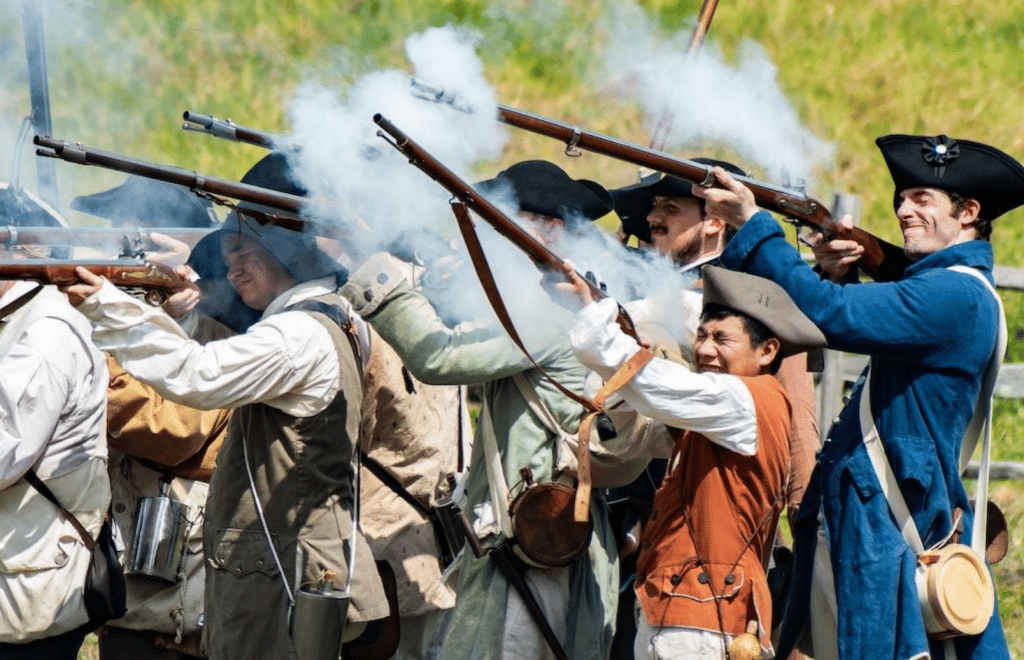Rifles have played a significant role in the development of modern warfare, hunting, and sport shooting. Over the years, these weapons evolved as well, undergoing various modifications that gave them improved accuracy, power, and reliability.
This article will explore the history and evolution of rifles, from the first muskets to highly accurate modern-day rifles. Read on to learn more!
Early History of Rifles
The history of firearms dates back to the 13th century when the Chinese developed gunpowder. However, the first musket, a type of firearm that used gunpowder and fired a ball or shot, appeared in Europe in the 15th century. These early muskets were quite heavy and took a long time to load and fire, which limited their effectiveness.
The first rifles appeared in the 17th century, with the earliest known rifle made in 1630 by a German craftsman. Unlike muskets with smoothbore barrels, rifles had spiral grooves cut into the inside wall. These grooves forced the bullet to spin as it exited the barrel, improving accuracy and range.
However, rifles were much more challenging to manufacture than muskets, which made them expensive and, therefore, less common.
Rifles in the 18th and 19th Centuries
In the 18th century, rifles saw significant improvements in design and ease of production, making them more widely available and better suited for military use. The most significant advancement came with the introduction of the percussion cap, which replaced the flintlock mechanism. The percussion cap allowed rifles to fire more reliably, quickly, and accurately.
During the American Revolutionary War, the long-barreled Pennsylvania Rifle gained prominence. This rifle was used by the Continental Army and was famous for its accuracy and range. The firearm later became more widely known as the Kentucky Rifle and was widely used in the American frontier.
In the 19th century, firearms continued to evolve, and repeating rifles, such as the Henry, were introduced. These rifles could fire multiple rounds without reloading, which was a game-changer. Repeating rifles were used extensively in the American West, where they were essential for hunting and self-defense.
Evolution of the Modern Rifle
In the early 20th century, bolt-action rifles became popular, with many militaries adopting them as standard issue. Bolt-action rifles were highly accurate and reliable, making them ideal for military use. During World War I and II, bolt-action rifles, such as the Lee-Enfield, Mauser, and Springfield, were used extensively.
After World War II, semi-automatic rifles — which could fire multiple rounds without the need for manual operation — started gaining popularity. The M1 Garand, used by the US military during World War II, was one of the first semi-automatic rifles to see widespread use. These rifles were highly effective in combat but also popular for sport shooting and hunting.
In the 1960s, the AR15 rifle was introduced. The AR15 is a lightweight, semi-automatic rifle initially designed for military use. It is highly customizable and can be modified to suit a wide range of applications, from combat to sport shooting. This firearm remains highly popular in the US civilian market to this day, where it is commonly used for hunting, target shooting, and home defense.
In recent years, the development of modern materials, such as carbon fiber and titanium, has led to the creation of highly advanced rifles. Seemingly every new rifle on the market is lighter, more durable, and more accurate than previous models.
Different Uses for Rifles Today
Rifles are not only used for hunting, military, and target shooting but also for recreational and practical purposes.
One example of recreational rifle use is the popular sport of biathlon, which combines cross-country skiing and rifle shooting. Another example is precision long-range shooting, which involves shooting targets at distances of over 1,000 yards.
Practical uses of rifles include pest control on farms and ranches and protection against wild animals in remote areas.
Rifles are also used in law enforcement and homeland security. Specialized weapons, such as sniper rifles, are used by law enforcement agencies to take out targets at long distances, while patrol rifles are commonly issued to police officers for self-defense.
However, the use of rifles, particularly in the United States, has become a highly controversial topic in recent years due to mass shootings and the debate over gun control. While some argue that rifles are necessary for self-defense and other legitimate purposes, others call for stricter regulation to prevent gun violence. As the debate continues, it remains to be seen how rifles will continue to evolve and be used in the future.
Summary
From the early muskets of the 15th century to the highly advanced firearms of today, rifles have undergone numerous technological advancements and changes.
As this article has demonstrated, rifles have come a long way in terms of design, materials, and technology, evolving into versatile tools for sport, hunting, and combat. From the early rifles that were difficult and expensive to produce to the modern-day AR15 rifle that is highly customizable, lightweight, and reliable, the history of rifles is a fascinating story of technological evolution.
There is no doubt that rifles will continue to evolve, with new materials, technologies, and designs introduced to the market year after year. However, the increasing debate over gun control and regulation may impact the future of rifles and other firearms.

